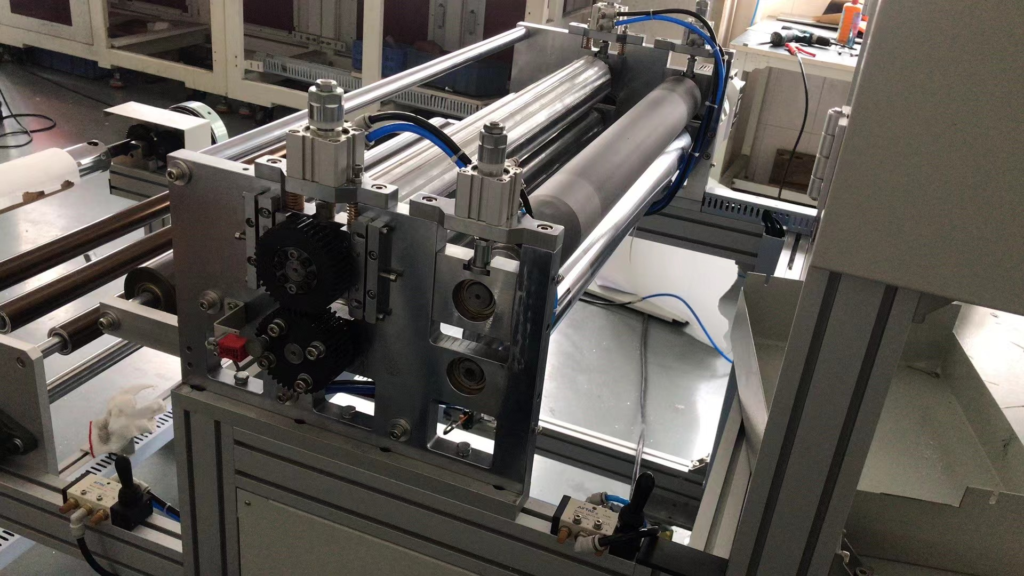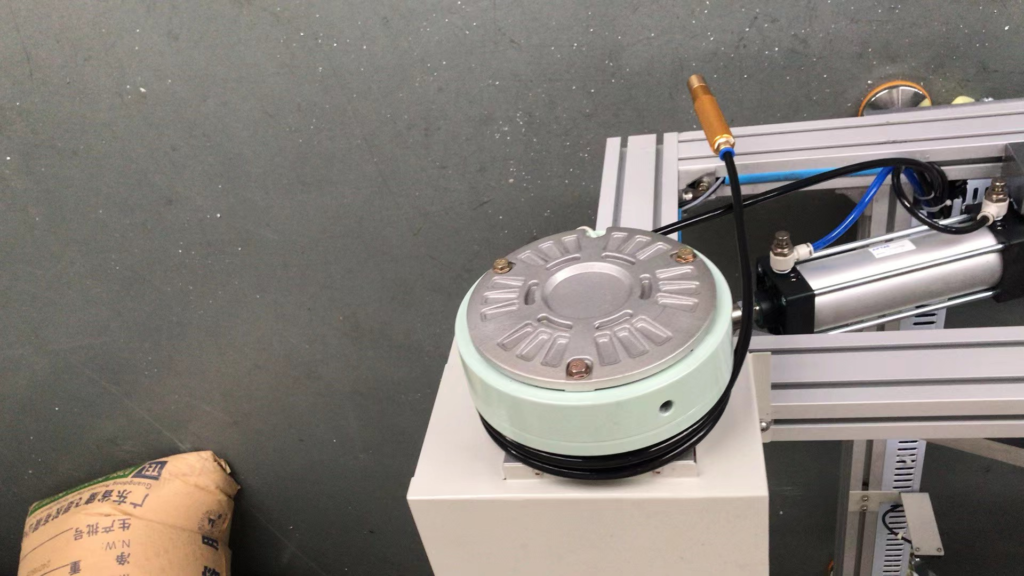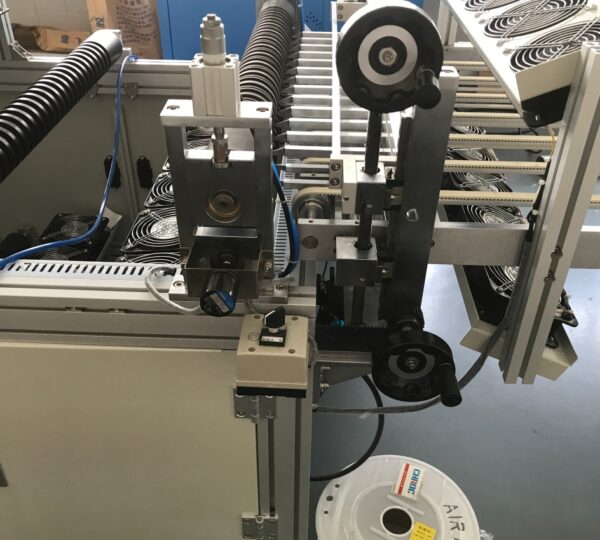Maintaining consistent tension is a common challenge in the paper pleating machine feeding process. In many systems, tension differences can cause paper feeding errors or jams, ultimately leading to downtime and increased maintenance costs. For automatic paper media pleating machines, overcoming these issues requires precise calibration of the paper feeding mechanism and innovative control methods. In this discussion, we will explore strategies and technologies to improve the reliability and stability of paper feeding in the automatic paper media pleating machine.
The role of pneumatic shafts with scales in automatic paper media pleating machine
The cornerstone of solving the feeding problems of the automatic paper media pleating machine lies in the design of the feeding mechanism. The highlight of Dahe’s intelligent design is the pneumatic shaft equipped with a scale. Air pressure controls the movement of the feed shaft to ensure accurate and consistent feeding of paper media. The integrated scale provides real-time measurement feedback, allowing technicians to monitor and adjust the feeding length and speed precisely.
Variations in the feeding length can cause fold misalignment or inconsistent pleating, affecting the finished product’s overall quality. Operators use pneumatic shafts and accurate scales to quickly verify that the required parameters are met. Such a setup minimizes the risk of errors and ensures that paper media is fed with constant tension and position. In addition, pneumatic axes can respond quickly to changes in operating conditions, which is a significant advantage in high-speed production environments. By adjusting the air pressure, the system can adapt to different paper types and thicknesses, optimizing the stability of varying material feeding.
Maintaining Material Tension with Magnetic Powder Brakes in Automatic paper media pleating machines
We integrated magnetic powder brakes into the feed shaft to maintain proper material tension during the conveying process. The magnetic powder brake applies a certain amount of resistance to the feed shaft to ensure that the paper remains taut during the conveying process. This constant resistance minimizes tension fluctuations that can cause uneven feeding, misalignment, or paper jams. Using magnetic powder in the brake allows for finely adjustable resistance to accommodate different types and thicknesses of paper.
Precise tension control allows for smoother and more stable paper feeding, essential for achieving perfect folds and wrinkles. In addition, the magnetic powder brake uses non-contact braking, reducing wear on the brake system and the feed shaft. This not only improves long-term stability but also extends the service life of the entire machine. By keeping the material tension stable, the system prevents damage, such as wrinkles or stretching, which can reduce the quality of the finished product. Precise tension control allows for smoother, more stable paper feeding and perfect folds and creases.
Precision Indexing with 750W Motor and Cylinder Lifting
To ensure greater precision, the indexing mechanism of this paper folder is driven by a powerful 750W motor, enabling the system to quickly push various media while maintaining precise control of feed increments. The powerful motor ensures the machine runs at a constant speed and reduces the possibility of feeding errors due to unstable power output. In addition to the motor, the system equips the paper feed drive wheel with a cylinder lift function, which directly improves the convenience of paper feeding. At the same time, the cylinder lift function helps the paper to rise and fall smoothly when feeding into the machine, ensuring continuous paper flow and reducing the risk of jams or misalignment. These components work together to not only improve the mechanical reliability of the machine but also help shorten cycle times and improve production efficiency.
Ensure continuous feeding within conveying and storage limits.
In addition to mechanical characteristics, one of the keys to solving the feeding problem of automatic paper media pleating machines is the integrated conveying and storage limit function. The conveying and storage limiter mechanism prevents overfeeding or accumulation of paper in critical areas of the machine. It is a safety protection to ensure the paper does not accumulate or lose tension when passing through the folding stage. An even material flow is maintained by setting precise limits in the conveying and storage stages, and the risk of jams or interruptions in operation is reduced.
At the same time, this function allows the machine to run continuously without manual intervention, thereby improving the overall process’s reliability. The system temporarily stops feeding when it reaches the storage limit, thus preventing overload and subsequent damage. After removing excess material, the automatic shutdown function ensures the machine does not run idle or experience operating stress.
Safety and efficiency with the automatic stop function
For paper media pleating machines, the automatic stop function monitors the presence of material during operation. When the feeding mechanism detects no material, the system automatically shuts down the machine to prevent it from running idle or operating abnormally, which may cause damage.
The automatic stop function is essential to protect the equipment and prevent potential failures due to running with insufficient material. Without this function, it may appear to run in a no-load state, which may cause overheating of components or unnecessary wear of mechanical parts. The system proactively stops operations when it detects a feeding problem, helping operators solve it before it escalates into a more serious failure. In addition to safety, this feature also helps improve energy efficiency. By preventing unnecessary operations, the automatic stop function reduces power consumption, reducing operating costs and extending the machine’s life.
Bring a more stable feeding process
From the basic design of the feeding mechanism, including the pneumatic axis with scale and magnetic powder brake, to the precise operation of the 750-watt motor and cylinder lifting function, every link is critical to the overall stability and performance. The conveying and storage limit function and the automatic stop function of no material further ensure the smooth and safe operation of the feeding process.





